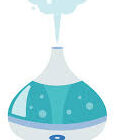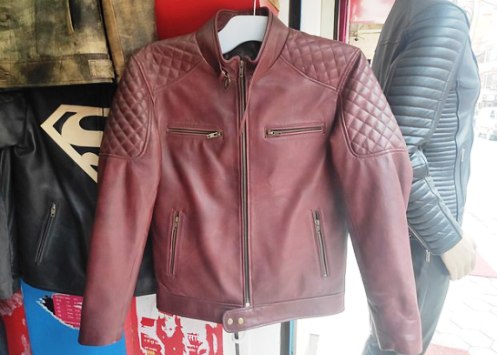How Does Humidity Affect Leather? Maintain Moderate RH Levels Only!
Is humidity bad for leather? If you are asking this, you have some funky leather items in your closet.
It could be a pair of stunning cowhide boots, or it could be a handbag, leather furniture, or even a jacket.
Since genuine leather items cost a substantial amount of money, it is vital to keep them in good shape.
High humidity is bad for many things, even for your health. Leather contains its own natural moisture (in form of oil) that keeps it supple and nourished. However, when it is exposed to air that is too dry, it might dry out completely.
To preserve their level of natural moisture, leather items require to be kept at the right humidity level, which is between 30 and 50%. However, in some instances, you can raise the humidity level some more to 60%, but never beyond that because it can cause fungus growth and serious mold toxicity symptoms!
If you want to maintain the right humidity level for your leather shoes and clothes, you might need a small, closet dehumidifier. You can even get a battery-powered dehumidifier for the small closet space only.
Best humidity level for leather: not higher than 50%
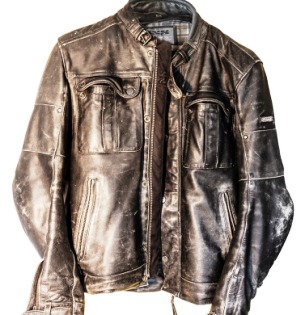
The best humidity level for leather is 30 to 50 percent, and I will show you why. I have quite a few leather items myself—boots and one spanking jacket.
However, while I have never noticed any problem with the leather boots, probably because I wear them often, the leather jacket is another story altogether.
I left it too long in the closet, and when I took it out about a month later, it was covered in mildew on the side that was next to the wall.
Nasty!
If you do not know, mildew is usually powdery, ashy, or whitish. Mold can be red, green, black, and so on.
But if you have mildew, mold is usually not too bad since both of them come as a result of having too much humidity in your indoor air.
Mold is more sinister than mildew, but still, you do not want mildew on your items.
Having stale air, humidity, and poor lighting (does your closet pop into mind?) are all that mildew needs to grow.
Mold needs just about the same thing. Both mildew and mold make the air smell musty. If you see mildew, mold is also present, or it is about to start forming.
Back to my recommendation, keep the humidity level in your closet at 30 to 50%, this is better because mold cannot grow.
Usually, mold grows at humidity levels that reach 60 percent. If you let the humidity rise to 70 percent, mold is sure to form.
Does leather do well in humidity? Yes and no
Leather absorbs moisture from the air. If the humidity is too high, mold can start growing on the item. Mold can cause serious sickness symptoms, so you really do not want it on your items.
On the one hand, humidity is good for leather items. Leather can absorb some moisture from its surroundings.
However, don’t let humidity run too high because it can cause problems. The highest humidity that you should expose the leather items to is 55%.
Just make sure that the RH stays at a moderate level. That way, only a little of the moisture is going to penetrate the leather.
To understand how high humidity affects leather, you should have a general idea about leather in its natural state.
Leather is not like solid-opaque. It is porous! Therefore, it is going to absorb water from the surrounding air.
You cannot prevent this unless you apply shoe polish. But then, that will not make the leather breathable anymore.
In any case, a little moisture absorption is good for leather. The right humidity level keeps leather supple, soft, and flexible. It can even enhance the lifespan of the leather item.
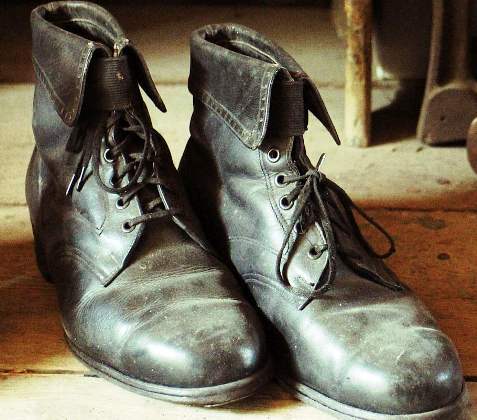
Now, many things can happen when leather absorbs water. The biggest is that the fibers could start swelling and become weaker.
Do not expose leather to high humidity for long. In fact, find a means to control the humidity level inside the closet because prolonged exposure can harm the leather items.
When buying leather items, find out whether they come treated with anti-fungi and anti-mold agents. Most leather manufacturers do this to enhance the lifespan of their items.
Is low humidity bad for leather?
Exposing leather items to low humidity is not good. However, just as we said about exposing leather to humidity, the effect depends on the duration of the exposure.
For leather to remain flexible, supple, and in good shape all the time, it must retain its natural moisture. However, when you expose it to extremely low humidity, it can dry up.
Leather dries up and starts cracking when it is left in too much dry air for a long time. There is a good reason for this.
When the air is dry, it starts to absorb moisture from the things that have it. For instance, it absorbs moisture from the plants, eventually causing wilting.
Dry air also absorbs moisture from clothing, leather, and even wood items. That is why, when things are exposed to dry air for too long, they tend to shrivel up and die.
During the winter, you need to know how to store leather because the air can get too dry. The reason for this is that cold air holds less moisture. You will also turn on the heat, which might dry the air some more.
The important thing is to always use a hygrometer to check the level of humidity. That way, there will be no guesswork in the picture. You will know when to use a humidifier or dehumidifier in the closet.
Does humidity affect leather? FAQ
Too high or too low humidity affects the quality of leather. Thus, maintaining the right humidity level in the closet of between 30 and 55% is encouraged.
Here are some more frequently asked questions and answers to shed light on how humidity affects leather.
Is leather good in humidity?
Maintaining a moderate humidity level in the closet can keep your leather items supple and flexible.
Keep the indoor humidity at 30 to 50%. That way, leather absorbs minimal moisture from the surroundings.
Does humidity shrink leather?
Moisture can help to shrink leather. But it is not just the moisture alone. It is a combination of moisture and heat. Thus, if you are trying to shrink leather deliberately, just soak it in water for a few hours.
The fibers will absorb water and tighten up. You should then take the item out of the water and expose it to heat immediately. It will shrink.
So does humidity shrink leather? If the level of humidity is high, say 70 percent or higher, and you expose the leather item to this too long, it will absorb too much moisture. If you then expose it to direct heat for too long, the leather will shrink.
It might not happen immediately, but if this trend goes on for a few to several days, your leather will shrink.
Why does moisture ruin leather?
The way moisture ruins leather is that when the fibers absorb moisture, if they are then exposed to dry air, it draws moisture out.
It draws out the natural oil that leather contains too. The oil molecules bind with the water molecules, and the dry air draws them out together.
Exposure to a little moisture is not bad, but when the humidity is too high, it will ruin leather items.
How do you protect leather bags from humidity?
Leather bags are so chic. However, you have to protect them from high humidity. In this case, what you need to do is dry the bags under a ceiling or standalone fan.
That way, the air will suck out all the moisture in the leather. After that, store your bags in a controlled environment. Try a closed box that can keep the humidity out.
Check on your leather bags from time to time. Hold them close to a running fan so that it can whip away any musty smell. If kept in airtight conditions for too long, leather can get stale.
How do you store leather in humid weather?
If you have a lovely pair of leather boots and you live in a humid place like Florida, you need to know how to keep them protected from the humidity.
There are a few ways to do this. One of them is to wrap the leather in paper. Paper allows aeration, preventing the leather from going stale.
Secondly, you can use rolled cardboard tubes. They allow air to get in and out of the leather, so the air around them won’t go stale.
Thirdly, you can store leather items in the box they came in. Manufacturers offer the best packaging that keeps the item in perfect condition.
Fourthly, and lastly, control the humidity level in the closet (for boots and shoes). You can use a battery-powered dehumidifier to lower humidity and a battery-powered humidifier to increase RH.
What humidity should leather be stored at?
The RH level for your closet should never exceed 50 percent. At 60 percent, you might start mold colonies in your house, and mold spores can spread easily.
A little moisture in the air is not bad for leather. However, like most items at home, you should keep a moderate RH level for leather goods all the time.
How do you keep leather shoes from molding?
Leather shoes get moldy, and mildew forms when you store them in an area that is not humidity-controlled. You also need to control the temperature of the room where you store your shoes.
Always maintain room temperature because warm air retains more moisture while cold air is drier. Keep a check on the shoes and air them in front of a fan or outside from time to time.
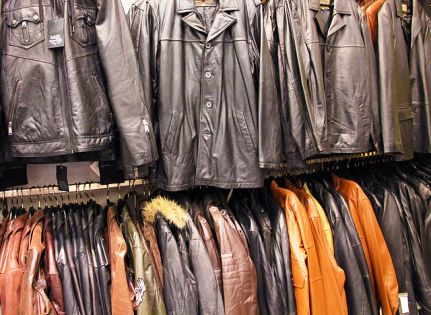
Wrapping Up
Not all humidity is bad for leather, only too high or too low humidity. On the one hand, when humidity is too high, it can damage the leather. It can also cause the development of mold, which might eventually cause illness.
On the flip side, when the humidity level is too low, the dry air sucks moisture from everything around it.
It will do the same to leather, and this will dry it out so badly. It will eventually start cracking from overexposure to dry air.
Finally, you must store your leather items just right. Leather needs to breathe. Always cover it in paper and store it in cardboard boxes.
From time to time, put it before a running fan to dry out any excess moisture. Above all, have a dehumidifier and/or humidifier to keep the humidity level within 30 and 50% all the time.
